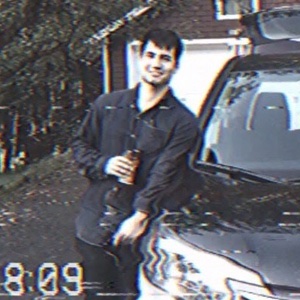50+ Found Footage Horror Movies: The Definitive List
Directors and audiences both love found footage films because they offer a rawer perspective. Discover the best found footage horror movies in this list.
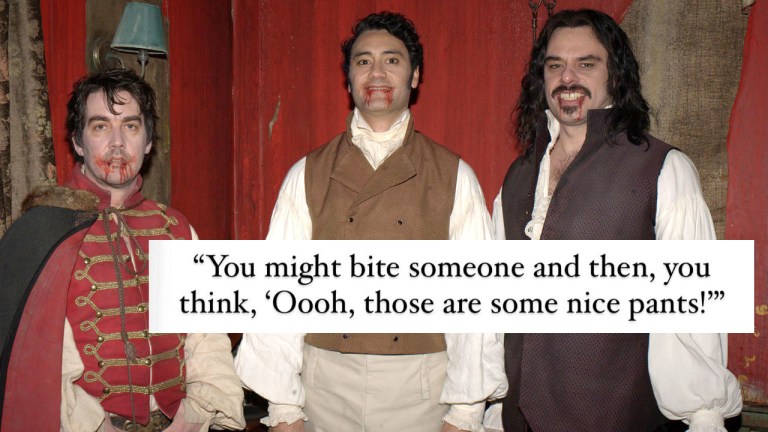
Found footage horror movies are an important subgenre of horror cinema. Many of the most effective found footage horror movies use the format to create a horror experience that feels more authentic than a traditional Hollywood film.
Table of Contents
Mostly stripped of sound effects, fancy camera angles, and the gloss of a big-budget production, found footage horror movies strive to make people feel enmeshed in the tragedy and violence of what is unfolding on the screen. They blur the lines between fiction and reality by presenting their fictional stories as if they were really recorded by the characters in the story. Found footage is also a good strategy for aspiring filmmakers to enter the market, as found footage films are almost always very low budget films.

For example, The Blair Witch Project (1999), had an original budget of around $40,000, but ended up grossing over $250 million worldwide. Likewise, Paranormal Activity (2007) by Oren Peli was made with a budget of only $15,000 and made over $193 million worldwide.
The found footage genre also frequently bleeds into mockumentary and pseudo-documentary subgenres. In these movies, the audience is treated to what plays as a normal documentary but which is entirely (or mostly) fictional. More recent developments have seen a rise in computer-screen (aka screenlife) movies which are found-footage style movies which are presented as if they are playing on a computer or smartphone screen.
There are so many found footage horror movies that there is a whole website dedicated to tracking them. In this article, we’ll survey a great deal of the best found footage films and feature an eclectic list of random ones.
Old Found Footage Movies
Cannibal Holocaust (1980)
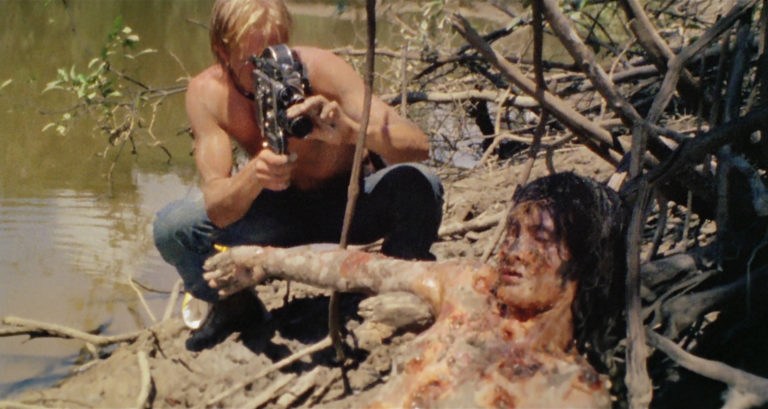
Some critics consider director Ruggero Deodato’s Cannibal Holocaust to be the most controversial horror film ever made. Controversy aside, this cult classic film was one of the first movies to experiment and bring the found footage format to the forefront of a movie. Cannibal Holocaust is about an anthropologist (Robert Kerman) sent to find out what happened to a mondo-style documentary crew who traveled to the Amazon rainforest but never returned. The rescue mission is shot and presented like a regular movie, but the fate of the missing crew is only seen via the footage they shot, footage which is discovered during the rescue mission.
Man Bites Dog (1992)

Any serious horror fan should give this French black comedy crime mockumentary a good watch. The story opens on a film crew following a charming serial killer as he takes commits graphic murders, even following him to social situations around his family and friends. What starts out as a docu-profile on a serial killer soon turns into a compromising situation where the camera crew becomes more involved and responsible for the murders that their subjects commits. The entire film was shot in black and white by four student filmmakers.
The Last Broadcast (1998)

When two cable TV hosts are tragically murdered, one body is never found. Inspired by the gruesome mystery, a documentary filmmaker investigates the murders within his unsolved crimes show. His team receives a tip to track down the Jersey Devil, a mythical creature said to fly the Pine Barrens region of New Jersey. With the help of psychics and the court of public opinion, the investigation constantly uncovers new truths and dark secrets. Despite being shot on a budget of $900, this film earned $4 million in international box office sales.
The Blair Witch Project (1999)
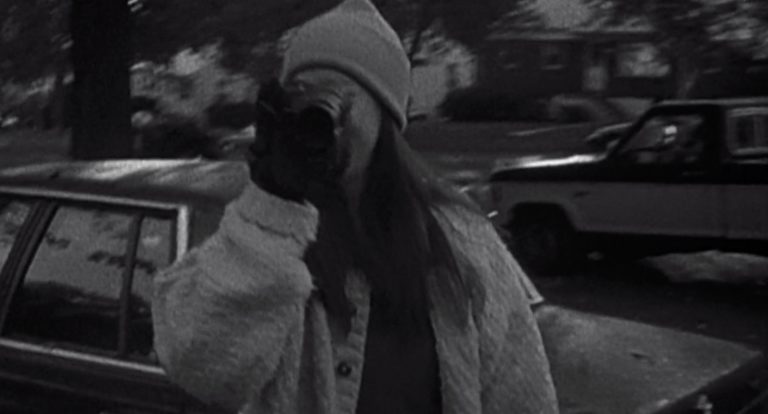
Attention all student filmmakers: this supernatural horror film was shot entirely on a budget of about $35,000, and it went on to earn a whopping $248.6 million in box office sales. This film’s massive success is proof to amateur filmmakers that low-budgets are irrelevant if your project has a captivating storylines, dynamic characters, and damn good acting. Mystery unfolds as the film takes you through the journey of three film students eager to investigate the local Blair Witch Legend. However, a supernatural presence takes their lives, leaving only their camera behind to offer clues.
August Underground (2001)
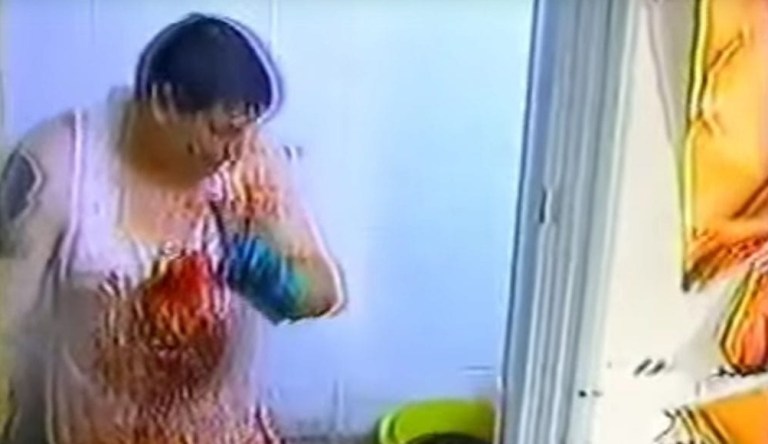
August Underground is made to look like legitimate torture and murder documented on camera by the killer, Peter (Fred Vogel), and his accomplice. The VHS footage is shaky and blurry, effectively obscuring anything that might give away how its plentiful gore effects were created. August Underground may be found footage in its most pure form, because nothing about it feels orchestrated. There are no setups to catch the perfect shot here. The footage is mean, nasty, and hard to watch. This is for people interested in the more extreme side of cinema.
New Found Footage Horror Movies
[REC] (2007)
![[REC] (2007)](https://creepycatalog.com/wp-content/uploads/sites/2/2020/10/rec_2007-768x433.jpg)
Co-directors Paco Plaza and Jaume Balagueró took an intriguing filmmaking approach to this highly successful Spanish found-footage horror film. The storyline follows a reporter and her cameraman as their investigation in a mysterious apartment building turns into a desperate attempt at escape. Utilizing a much different approach than typical filmmaking, actors were given their lines the day of shooting and the entire film was shot chronologically on real locations. The film’s success led to three sequels following in the years after.
Paranormal Activity (2007)
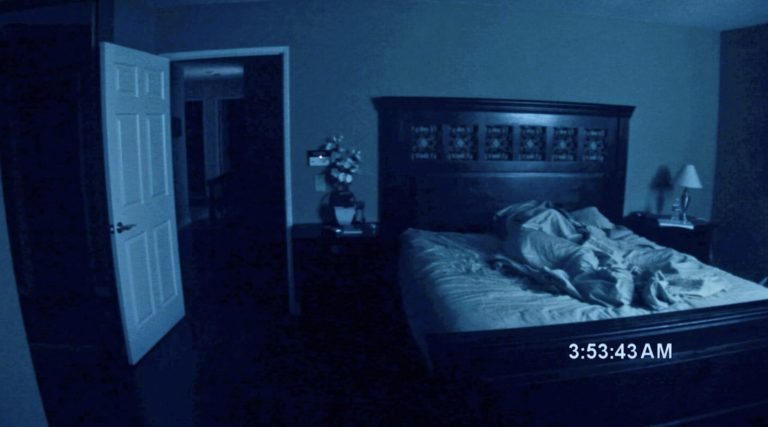
Filmed on a budget of only $15,000 and taking in global box-office receipts of over $300 million, Paranormal Activity is one of the most profitable movies in film history, leading to multiple sequels. Filmed primarily with a handheld camera from the perspective of Micah (Micah Sloat), it tells the story of him and his girlfriend Katie (Katie Featherstone), who move into a middle-class house and attempt to document why Katie feels she has been experiencing supernatural events her entire life. It is revealed that a demon has attached itself to Katie and that Micah’s attempts to film it, even while they sleep, have angered the demon.
Lake Mungo (2008)

Described by many as the scariest film ever made, Lake Mungo is filmed documentary-style by a paranormal investigator who follows the Palmer family who have lost their 16-year-old daughter Alice during a drowning accident in the town of Ararat, Australia. After Alice’s body is recovered and she is buried, strange events begin happening to the family in and around their home. Over time, the parapsychologist who is filming the Palmer family comes to the horrifying realizations about Alice and what led her to her fate.
Cloverfield (2008)

A hybrid of a found-footage film, a traditional disaster film, and a romantic tragedy, Cloverfield is set in Manhattan and begins with Hud (T.J. Miller) filming friends at a going-away party for a man named Rob (Michael Stahl-David). In the midst of the party, a gigantic monster attacks Manhattan, evoking 9/11 imagery as everyone flees and the city appears to be on the brink of total destruction. Hud continues filming the events as they unspool, focusing in the romantic relationship between Rob and his girlfriend Beth (Odette Yustman). At the end of the film, it abruptly cuts back to footage of Rob and Beth enjoying themselves at Coney Island, suggesting that the world has ended, the entire movie was simply taped over some previous footage, and that the tape was found amid the ruins of a destroyed Manhattan.
Trollhunter (2010)
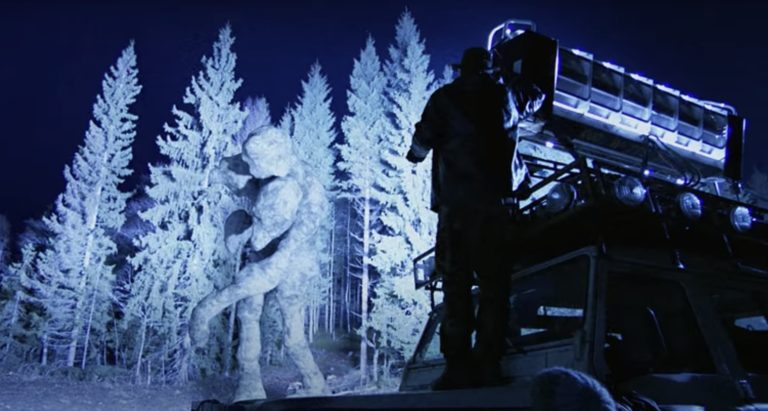
Originally titled Trolljegeren, this Norwegian fantasy horror follows a student investigation into mysterious bear killings. They follow a trail of clues to a strange hunter who reluctantly agrees to let the students follow his adventures. Before long, they discover that the subject of their investigative documentary actually works for a top-secret government agency responsible for hunting dangerous trolls. Writer-director André Øvredal included several references to Scandinavian folklore throughout the film.
The Last Exorcism (2010)
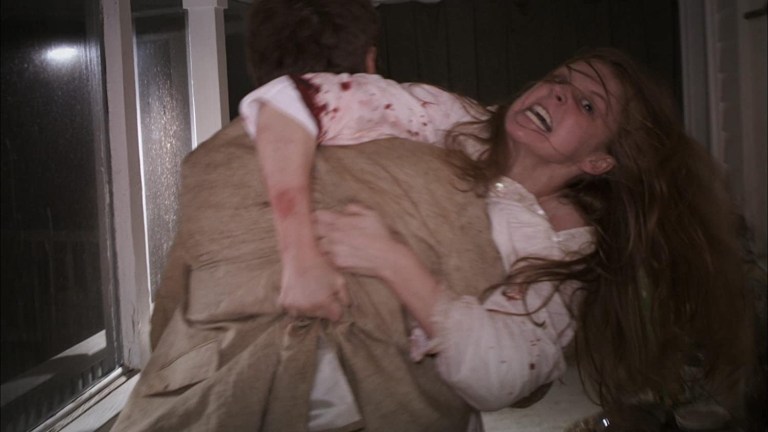
Reverend Cotton Marcus (Patrick Fabian) has lost his faith, and he is on a mission to expose what he sees as the fraudulent and harmful practice of exorcisms sanctioned by the Christian Church. Marcus takes a film crew with him to a remote farm where he plans to perform a fake exorcism while documenting his action with a film crew. His plan doesn’t go as intended, putting himself, his crew, and the family at the farmhouse in danger. The Last Exorcism is an underrated found-footage movie that is effective in large part thanks to its charismatic lead actors and a compelling story that keeps you wondering about what’s really going on.
The Tunnel (2011)

This is a relatively obscure movie and very much under the radar, but a decent and amusing horror flick. A reviewer on the writing platform Medium describes the appeal of the film:
The Tunnel is a claustrophobic nightmare, capturing the sensation of being stalked as prey by a horrific unknown in a first-person perspective. Like other mockumentary-style films on here, it has the excellent quality of engrossing audiences in what feels like an actual documentation of events. The movie also gets creative in how it seeks to mimic the experiences of an actual camera crew in this situation: when a microphone attached to a camera is unexpectedly yanked out of the room that the camera’s in, the film’s sound follows the mic into a hallway even while the camera’s visuals remain in the room.
Final Prayer (2013)

Released originally in England as The Borderlands, this found-footage horror film depicts a trio of Vatican investigators—a Scot, an Irishman, and an Englishman—who venture to a remote church in the English town of Devon to research reports of unusual paranormal activity that are initially described as “miracles.” Filmed handheld-style from the perspective of the investigators, it soon becomes clear that what were initially thought to be miracles were instead evidence of demonic activity that are due to the fact the church was built above the bodies of murdered animals and children.
Willow Creek (2013)

Willow Creek, California is a rugged mountain town of only 1,700 people where the infamous Patterson-Gimlin film of 1967 purportedly caught footage of Bigfoot walking in the woods. Since then, the village has been a tourist attraction and a magnet for Bigfoot enthusiasts. In his first horror film, director Bobcat Goldthwait casts Bryce Johnson and Alexie Gilmore as Jim and Kelly, a married couple who drive up to Willow Creek from LA and go camping deep into the woods in search of the elusive Sasquatch. The entire movie is filmed from Jim’s perspective and consists of only 60 total cuts, including a 19-minute take inside the couple’s tent where they believe they are being terrorized by Bigfoot.
WNUF Halloween Special (2013)

In this comedy-horror, director Chris LaMartina explores the found footage sub-genre from the perspective of footage from off-air recording of television station WNUF’s Halloween special. In other words, it’s footage that a camera crew put together but never aired, as they explored a haunted house. It’s a fun movie tinged with 80s nostalgia. One reviewer explained it thus:
[WNUF Halloween Special] is a tribute to those 80’s NEWS TV Halloween Specials. The special is a full fake news cast before the actual “Halloween TV Special” happens along with fake TV commercials that do look real from back in the 80’s. This special is fun and hilarious. The actors in it are great! Again…This is NOT a film loaded with jump scares or too much gore. It is a dark comedic recreation for those of us who grew up back in the 80’s to re-live those news broadcasts that tried to keep the Halloween spirit alive.
V/H/S (2012)
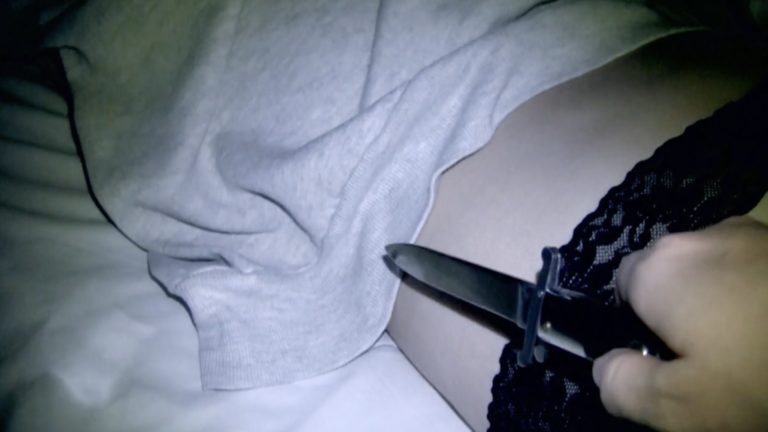
When a group of burglars break into an eerie, abandoned house, they find piles of VHS tapes in the home. Each tape contains a story that is connected to the next one, leading the viewer to uncover horrifying truths surrounding the fate that awaits them. This anthology led to two sequels V/H/S/2 (2013) and V/H/S: Viral (2014), a 2016 spin-off Siren, and a miniseries distributed through Snapchat. The film was developed by avid horror filmmakers whose individual pitches were constructed into a streamlined story that resulted in a final product that earned $1.9 million in box office sales.
Dabbe: The Possession (2013)

Dabbe: The Possession is a Turkish horror film about demons and an exorcism. It’s a found footage film done with exceptional care and artistry and is certainly not one to watch before bed, as it will keep you up for days. While the movie is in Turkish, it has great English subtitles and has gone viral on Netflix.
The Taking of Deborah Logan (2014)
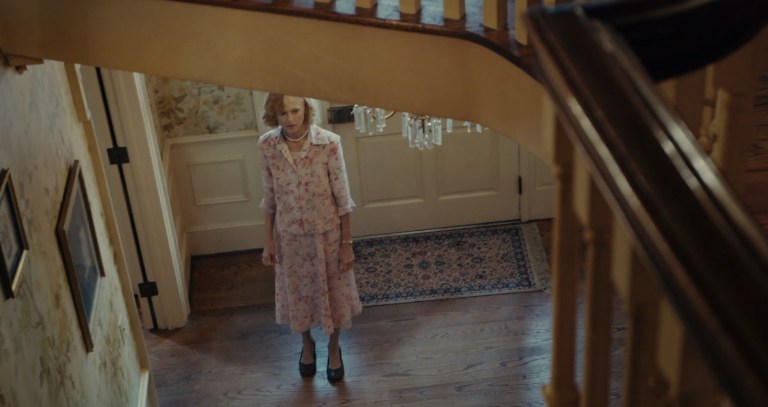
Jill Larson stars as Deborah Logan, a woman suffering from Alzheimer’s Disease who is the subject of a documentary. The film crew suspects something unusual, and possibly supernatural, is happening to Deborah, leading up to a truly wild finale. The less you know about The Taking of Deborah Logan when seeing it for the first time, the better, because the surprises are half the fun of this well-made found footage movie.
Creep (2014)
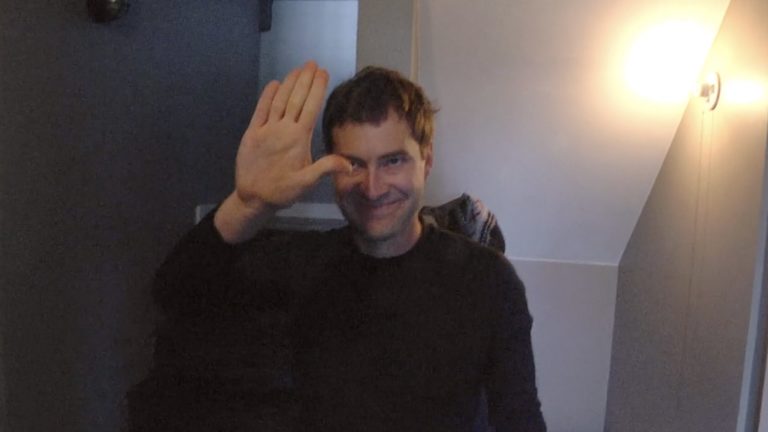
Inspired by strange Craigslist experiences and horror films such as Fatal Attraction (1987) and Misery (1990), director Patrick Brice made his directorial debut with this found footage psychological horror film. A freelance videographer accepts a Craigslist gig, and he travels to a remote mountain cabin to record the last words of a dying man. As his subject’s behavior gets stranger and more sinister, the videographer is forced to come face to face with his own tragic fate. The film’s dialogue is almost entirely improvised.
As Above So Below (2014)
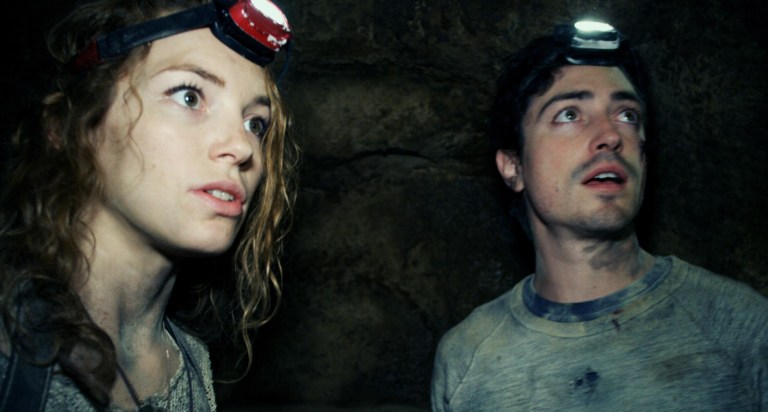
As Above So Below is a standout of the found footage genre, and it is one of the best horror movies of the 2010s. A crew led by a scholar searching for the Philosophers’ Stone, a mythical artifact with alchemical and regenerative powers, explores the catacombs beneath Paris. Naturally they become lost in the twisting tunnels, but there is something quite unnatural about what they discover in the darkness. With solid characters and a surprisingly good story to support the scares, As Above So Below builds up to a superb final act.
What We Do In The Shadows (2014)
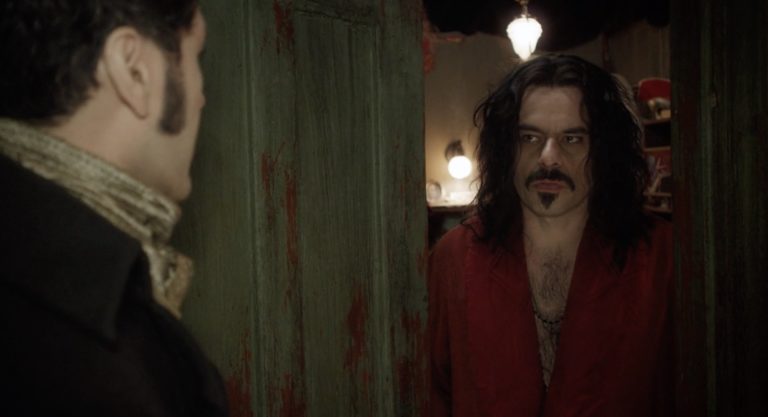
In terms of funny vampire movies, What We Do In The Shadows might be the best one out there. This mockumentary follows three vampires Viago (Taika Waititi), Deacon (Jonathan Brugh), and Vladislav (Jemaine Clement) who are struggling with the fact that they are very old vampires that haven’t adapted to the modern world. A film crew follows them around and hilarity ensues.
Ratter (2015)
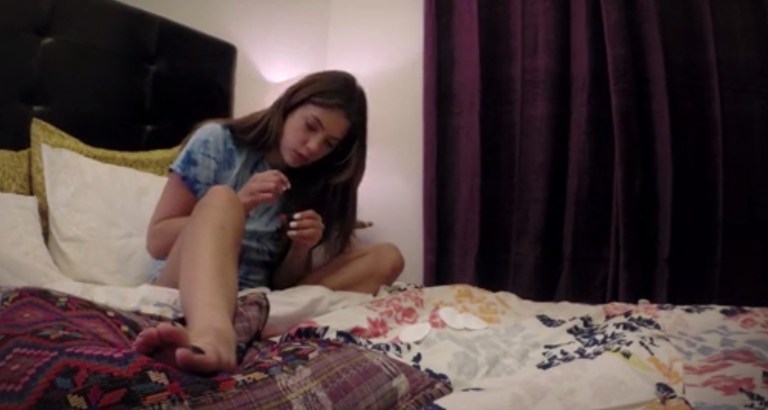
Ratter is a stalker film merged with a hacker film that embraces the found footage format with a uniquely digital twist. Made by filmmaker Branden Kramer, all of the footage within Ratter is either from a hacked webcam on the protagonist’s laptop or from her cell phone. It’s a unique contribution to found footage horror because of how it makes technology, patricianly iPhones and all devices with cameras, such a scary portal.
The Visit (2015)
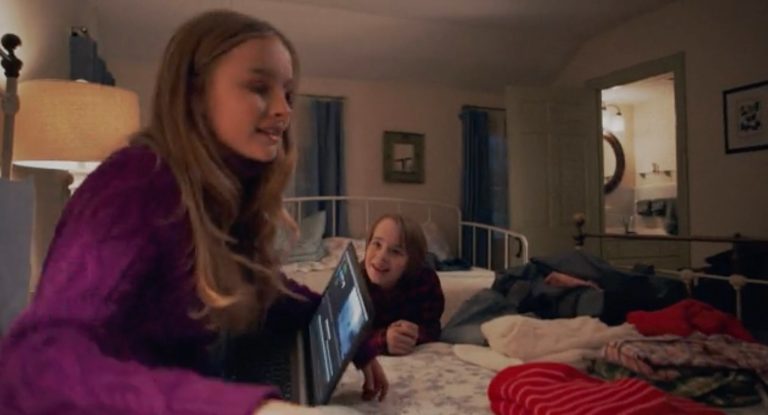
In this absolutely terrifying found footage movie, two young kids visit a farm in rural Pennsylvania to meet with their grandparents for the first time. They stay the weekend and things get eerie. In a way the movie combines horror and comedy, but it still always manages to be a radically scary film.
Savageland (2017)
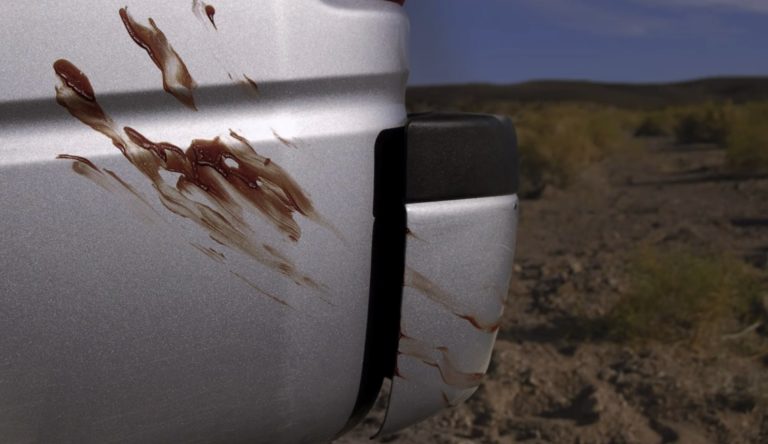
This mockumentary found-footage hybrid is the collaborative work of writer-directors Phil Guidry, Simon Herbert, and David Whelan. The remote town of Sangre de Cristo, translated to Blood of Christ, lies on the Arizona-Mexico border. When the entire town is wiped out and stained with bloody evidence, an unexpected witness finds himself at odds with law enforcement. The only survivor is an illegal immigrant who becomes an easy suspect target until his roll of photos offer a new lead on who and what is responsible for this devastating massacre.
Butterfly Kisses (2018)
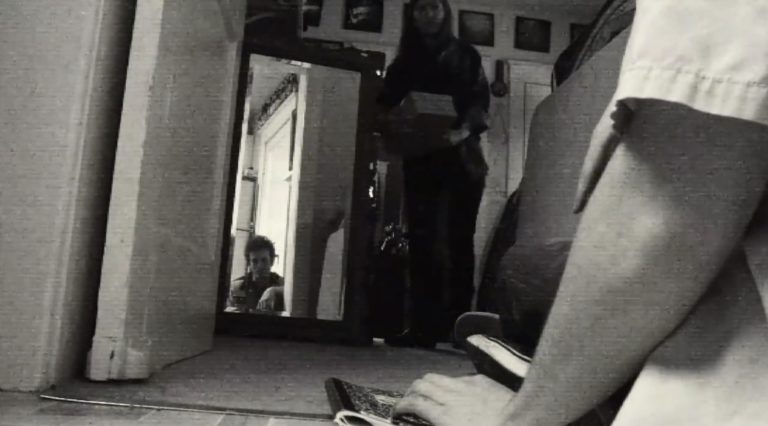
Urban legend Peeping Tom is front and center in the plot of this creepy film. A box of troubling video tapes intended for a student film leads an investigative filmmaker and his crew down a dark path of mystery. Unexpected jump scares, authentic visual storytelling, and a viral marketing campaign led to positive reviews of this Baltimore-based horror film. Director Erik Kristopher Myers also directed thriller films such as Roulette (2012) and 8 Ball Clown II (2018).
Gonjiam Haunted Asylum (2018)
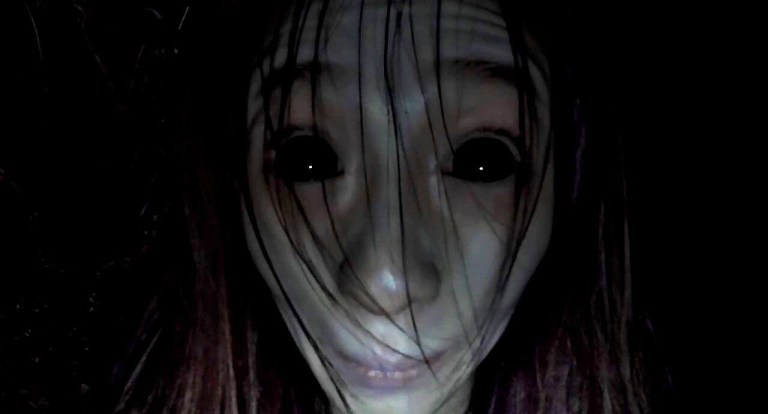
Gonjiam: Haunted Asylum is one of the scariest horror movies to ever be made in South Korea. In the movie, a group of people livestreaming their investigation of a notoriously haunted mental asylum. It doesn’t take long for the crew to become spooked, and the darkness takes the investigators one by one while providing a vast array of ghostly happenings. Gonjiam: Haunted Asylum found an audience outside of South Korea, and in its home country it was the third most-watched domestic horror movie upon its theatrical release.
Unfriended: Dark Web (2018)
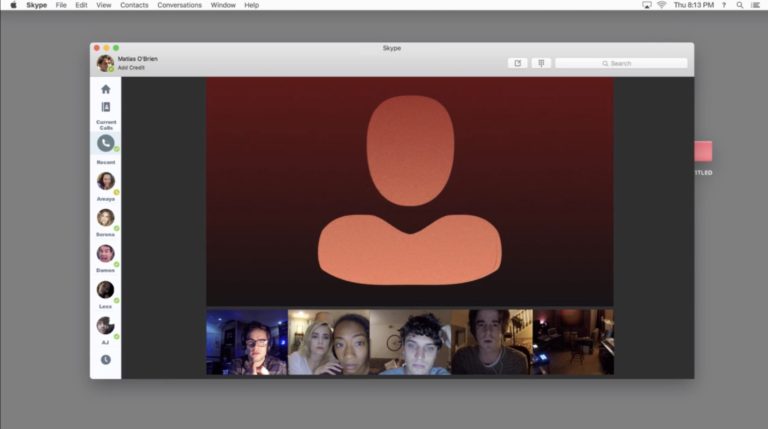
Unfriended: Dark Web is a computer screen film (aka screenlife), meaning it was shot entirely from the perspective of a screen recording on a computer. That is, what the audience watches when they watch this film, are friends talking to each other through iMessage, video chat, email, and so on. The creepy factor is added through found footage elements where the friends stumble upon a snuff films on the dark web and then are pulled into an evil online game with seriously bloody real-life consequences. It’s the sequel to another computer screen movie Unfriended (2014).
Host (2020)
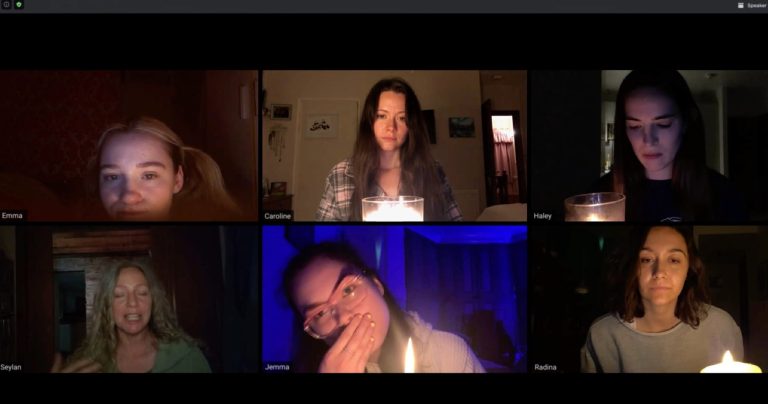
Host is a Shudder original from filmmaker Rob Savage, and the story is told exclusively through a Zoom video conference call. Six friends meet up digitally and conduct a séance over the internet. Fans of the movie recommend watching it in the dark and on a laptop to create the realistic impression that you’re part of the call and all the terror that is going to ensue is also happening to you.
I Blame Society (2020)

Gillian is a struggling filmmaker who has become increasingly disillusioned with the realities of trying to get a movie made. She decides to make her own film, a documentary about herself and whether or not she could be a good murderer. We watch as Gillian documents herself as her life begins to imitate her art. I Blame Society is a darkly humorous skewering of filmmakers and the superficiality of the film industry with a dash of true-crime obsession thrown into the mix.
V/H/S/94 (2021)
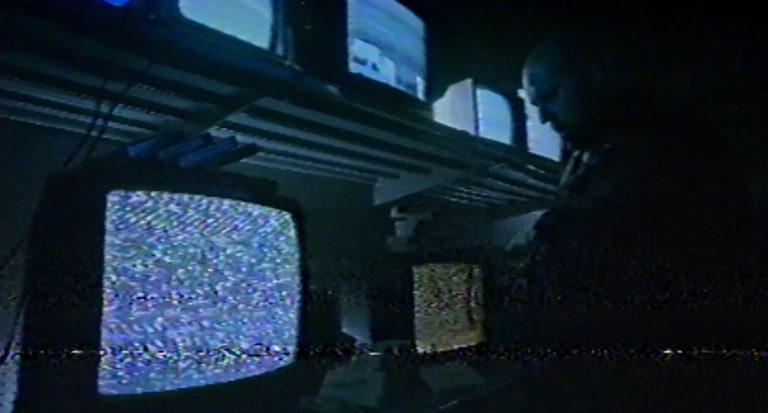
V/H/S/94 is the fourth main installment of the V/H/S franchise of found footage horror anthologies. The movie brings back writer/directors Simon Barrett and Timo Tjahjanto from previous films in the series, and they are joined by other filmmakers new to the franchise. This new entry contains a frame story about a SWAT team on a drug raid who discover many dead bodies in front of televisions playing some messed up tapes. As we watch the tapes, the bigger story of what’s really going on starts to come together. V/H/S/94 is a return to what made the franchise successful in the first place, and it’s arguably the best in the series so far.
The Medium (2021)
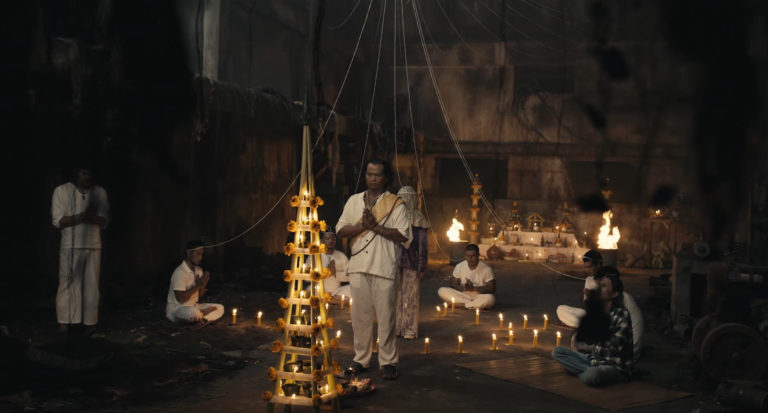
In The Medium, a documentary team follows a spiritual medium in Isan, the northeastern region of Thailand. The medium claims to be possessed by the spirit of a local deity, and she attempts to use her powers to help her niece, Mink, after she begins showing signs of malevolent possession herself. The Medium is a bit of a slow burn as we watch Mink’s possession get gradually more aggressive, and the payoff of the finale is fantastic. Mysteries are unveiled and much blood is shed in the film’s climactic ending.
Dashcam (2021)

Directed by Rob Savage and cowritten by Savage, Gemma Hurley, and Jed Shepherd (the same trio responsible for 2020’s Host), Dashcam is a found footage/screenlife movie that documents a really bad night for a really bad person. That person, Annie, travels from her home in Los Angeles to London to visit a former bandmate and friend, Stretch (Amer Chadha-Patel), whom she antagonizes, attempts to ruin his job, and steals his car all while streaming from her phone for a live audience. Her phone stays on and streaming (or at times simply recording) as Annie finds herself in a bizarre series of deadly encounters that begin with her agreeing to transport an old woman to an undisclosed location. Dashcam is a divisive horror movie, but the over-the-top violence, craziness, and comedy are certainly entertaining.
Incantation (2022)
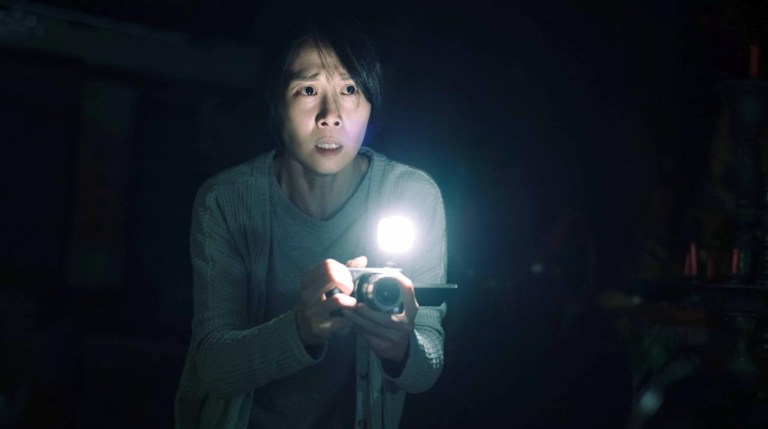
Supposedly inspired by real events, Incantation is a Taiwanese found footage horror movie about a mother trying to break a curse that has attached itself to her and her daughter. The mother, Li Ronan (Tsai Hsuan-yen), was involved in an online video show specializing in ghost stories, and one of her misadventures led to the curse. So now, she has created the video we are watching as a plea to anyone who might be able to help her out. There are some really nice scares in Incantation, and the finale is one that will be remembered for years.
Frogman (2023)

The titular Frogman is an amphibian humanoid that is a real-life cryptid urban legend in Loveland, Ohio. After capturing a glimpse of the creature on camera as a young boy, Dallas (Nathan Tymoshuk) becomes obsessed with the Frogman. As a struggling adult, Dallas decides to capture definitive proof that the Frogman exists and travels with his friends to Loveland to make a documentary about the legend.
More Found Footage Horror Movies

- The McPherson Tape (aka UFO Abduction, 1989) – An early science fiction found footage film by Dean Alioto. This movie also goes by the title The McPherson Tape.
- Noroi: The Curse (2005) – Footage of a missing paranormal investigator researching a demon named Kagutaba is used in this Japanese pseudo-documentary.
- Behind the Mask: The Rise of Leslie Vernon (2006) – This meta breakdown of the slasher genre is shot partially in a mockumentary style as a journalist profiles a serial killer.
- The Poughkeepsie Tapes (2007) – This chilling film is presented as a pseudo-documentary using extensive footage shot by a serial killer documenting his own crimes.
- Apollo 18 (2011) – This sci-fi horror movie presents itself as declassified footage of a top-secret and ill-fated18th Apollo mission to the moon.
- Reel Evil (2012) – In this movie filmmakers are hired to make a behind the scenes documentary, but the job turns into a horrific hellscape.
- The Bay (2012) – A virus outbreak film that takes place in Maryland, like The Blair Witch Project.
- Crowsnest (2012) – An interesting take on the film format because it presents itself as found footage from a police investigation.
- Devil’s Pass (2013) – Renny Harlin directs this horror movie about a group of college students who travel to Russia to investigate the the Dyatlov Pass incident, an event in which Soviet hikers mysteriously died in the frozen Ural Mountains in 1959.
- The Den (2013) – A screenlife movie about a woman (Melanie Papalia) who is drawn into a snuff-film ring while using a Chatroulette-style web site called The Den.
- The Sacrament (2013) – A Ti West movie in which VICE journalists visit a cult.
- Frankenstein’s Army (2013) – A deranged scientist meets war film.
- The Mirror (2014) – A British found footage film with a few creepy visuals.
- Camp Blood: First Slaughter (2014) – An incredibly low budget horror movie with a few raw, found footage moments.
- The Houses October Built (2014) – A group of friends search for the ultimate haunted house attraction experience, but they may get more than they hoped for.
- Be My Cat: A Film for Anne (2015) – A creepy stalker movie about a Romanian man obsessed with Anne Hathaway.
- Hell House LLC (2015) – A cult favorite about a group of people who investigate the deaths of multiple people at a haunted tour in an abandoned hotel which happened five years prior.
- The Gallows (2015) – A 20-year reunion commemorating a tragic death during a school play leads to supernatural horrors.
- The Entity (2015) – A found footage horror story from Peru and in Spanish about a group of college/university kids.
- Bad Ben (2016) – The first is a series of nine ultra-low-budget and campy found-footage movies about a haunted house and the put-upon man who buys it at a Sheriff’s auction.
- The Last Witch (2017) – A witch movie that knocks off a lot from The Blair Witch Project.
- Followed (2018) – A vlogger visits a haunted hotel.
- Happy Birthday Hannah (2018) – Using a combination of camcorder, surveillance cameras, and iPhone footage, Happy Birthday Hannah tells the horror story of a sister’s guilt for her sister’s death. The guilt evolves into something quite sinister over the course of the plot.
- The Lost Footage of Leah Sullivan (2018) — A found memory card shows a student’s research on a cold true crime case.
- Spree (2020) – Tells the story of a rideshare driver on a killing spree, all while streaming it live on his phone.
- Curse of Aurore (2020) – A supernatural horror movie that follows a trio of filmmakers as they investigate an urban legend of a young girl murdered in Quebec.
- Horror In The High Desert (2021) – A pseudo-documentary about the disappearance of an experienced outdoorsman in the Nevada wilderness.
Frequently Asked Questions
Was Cannibal Holocaust the first found footage?
What was the first found footage horror film?
The first true, 100% found footage horror movie may be Manson Family Movies (1984), a film which recreates the Manson Family murders and is presented as home movies filmed by the perpetrators themselves. Other early examples include 1985’s Guinea Pig: Devil’s Experiment (though multiple POV shots ruin the idea of it being found footage), Psychic Vision: Jaganrei (1988) about a reporter whose coverage of a pop star leads to supernatural events, and The McPherson Tape (1989) which is found footage of a family’s encounter with aliens.
What is a horror mockumentary?
An example of a horror mockumentary is What We Do in the Shadows (2014), while a horror pseudo-documentary example is Lake Mungo (2008).
What is a found footage thriller?
Why are found footage films popular?
In a traditionally crafted movie, we are forced to accept the story despite the barrier of knowing we are watching clips of actors edited together in a way that recreates a stylized version of reality. When done well, found footage removes most of that barrier and allows us to immerse ourselves in the world of the movie much more quickly and easily.
A less artistic reason the format is so popular is because filmmakers can make an effective found footage movie, on average, much cheaper than they can make a similarly effective traditionally-made movie. That not only allows more people to make a movie, but it also allows for more experimentation in styles since the movie needs to make back less money to be considered a success. That has led to a plethora of found footage movies in the decades since The Blair Witch Project popularized the format, and many of those moves are excellent (with many more being average at best).
